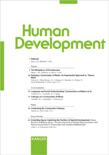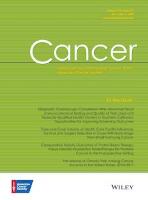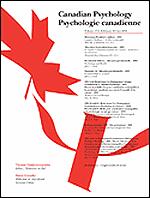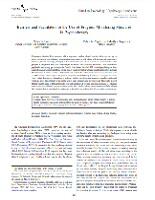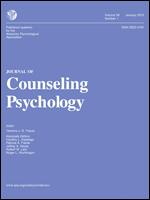Humanities and Social Sciences
Related Works
Content type
Digital Document
Abstract
The core knowledge (CK) account of human development ascribes higher-order cognition to infants on the basis of looking time measures. In this paper, we investigate the conceptual foundations of this account through an examination of the preferential looking paradigm. We focus on the use of this paradigm in social cognitive and morality research, which involves ascriptions of expectation, surprise, preference, belief understanding, and moral judgment to infant looking behavior. We compare CK researchers’ usage of these terms with everyday usage, and conclude that the application of belief and morality to infant looking behavior is overzealous. Based on these considerations, we argue that a developmental systems approach may provide a more appropriate theoretical framework for studying the development of such capacities.
Origin Information
Content type
Digital Document
Abstract
In tasks that demand rapid performance, actions must be executed as efficiently as possible. Theories of expert motor performance such as the motor chunking framework suggest that efficiency is supported by automatization, where many serial actions are automatized into smaller chunks, or groups of commonly co-occuring actions. We use the fast-paced, professional eSport StarCraft 2 as a test case of the explanatory power of the motor chunking framework and assess the importance of chunks in explaining expert performance. To do so, we test three predictions motivated by a simple motor chunking framework. (1) StarCraft 2 players should exhibit an increasing number of chunks with expertise. (2) The proportion of actions falling within a chunk should increase with skill. (3) Chunks should be faster than non-chunks containing the same atomic behaviours. Although our findings support the existence of chunks, they also highlight two problems for existing accounts of rapid motor execution and expert performance. First, while better players do use more chunks, the proportion of actions within a chunks is stable across expertise and expert sequences are generally more varied (the diversity problem). Secondly, chunks, which are supposed to enjoy the most extreme automatization, appear to save little or no time overall (the time savings problem). Instead, the most parsimonious description of our latency analysis is that players become faster overall regardless of chunking.
Origin Information
Content type
Digital Document
Abstract
Examined developmental differences in children's telephoning skills. Four girls and 4 boys from each of preschool, 1st, 3rd, and 5th grades were interviewed. Ss demonstrated how they would telephone a friend and an ambulance and how they would receive calls from a stranger and a friend. A general developmental trend was found for Grades 1, 3, and 5. Incoming calls were performed better than outgoing calls, but the gap decreased with increasing grade level. Preschool Ss performed as well as Ss in Grade 1. Children of all grades were generally knowledgeable about the technical procedures for contacting help in an emergency, but did not know what information was important and necessary to supply. 62.5% of Ss responded that parents were not home during the stranger call. Results support previous studies suggesting that children may lack the skills for stranger and emergency calling. (From publisher's site
Origin Information
Content type
Digital Document
Abstract
Male rats carrying the testicular feminization mutation (Tfm-affected males) are insensitive to androgens, resulting in a female-typical peripheral phenotype despite possession of inguinal testes that are androgen secretory. Androgen-dependent neural and behavioral processes may likewise show atypical sexual differentiation. Interestingly, these mutant rats display elevated serum corticosterone, suggesting a chronic anxiety phenotype and dysregulated hypothalamic–pituitary–adrenal axis. In order to understand if elevated anxiety-like behavior is a possible mediating variable affecting the display of certain androgen-dependent behaviors, we compared the performance of Tfm-affected males to wild type males and females in the elevated plus maze (EPM). Two well-established indicators of anxiety-like behavior in the EPM were analyzed: total percentage of time spent on the open arms, and the percentage of open arm entries. We also analyzed the total number of open arm entries. Interestingly, Tfm-affected males spent less percentage of time on the open arms than both males and females, suggesting increased anxiety-like behavior. Percentage of open arm entries and the total number of arm entries was comparable between the groups, indicating that the observed decrease in the percentage of time spent on the open arms was not due to a global reduction in exploratory behavior. These data, in contrast to earlier reports, thus implicate androgen receptor-mediated functions in the expression of anxiety behaviors in male rats. Given that anxiety is widely reported as a precipitating factor in depression, studying the role of the androgen receptor in anxiety may give insights into the pathogenesis of major depressive disorder.
Origin Information
Content type
Digital Document
Abstract
(BACKGROUND).
Evidence that avoiding axillary lymph node dissection (AxD) strikes an appropriate balance between morbidity and recurrence risk in patients with invasive breast carcinoma generally is anecdotal and without a formally quantified basis. The current study presents a decision analysis of the difference in 5‐year disease free survival (DFS) rate between treatment scenarios with and without routine AxD.
(METHODS).
To derive quantitative estimates of the effect of avoiding AxD on 5‐year DFS, the authors examined outcomes for women undergoing 2 treatment scenarios: AxD or no AxD with adjuvant therapy decisions based on risk factors in the primary tumor. Eligible patients belonged to 2 lymph node metastases risk groups: low (patients without palpable lymph nodes and lymphatic or vascular invasion [LVI] negative tumors ≤ 0.5 cm in greatest dimension) and moderate (patients with mammographically detected, LVI negative tumors, between 0.6‐2.0 cm in greatest dimension or patients with palpable LVI negative tumors between 0.6‐1.0 cm in greatest dimension with nonpalpable lymph nodes). Along with observed data regarding treatment and recurrence, the authors employed estimates of the efficacy of chemotherapy, tamoxifen, and regional radiation therapy derived from published randomized trials to estimate the 5‐year DFS rate for treatment scenarios with and without AxD.
(RESULTS).
Patients in the low risk group had a 5% risk of lymph node metastases. In these women, eliminating AxD and treating no patients with chemotherapy and/or tamoxifen resulted in a < 1% decrease in the 5‐year DFS rate. Patients in the moderate risk group had a 10% risk of lymph node metastases. Eliminating AxD and treating only those women with Grade 3 tumors > 1 cm in greatest dimension with chemotherapy and/or tamoxifen resulted in a 1.8% decrease in the 5‐year DFS rate. However, if all patients in this group were treated with chemotherapy and/or tamoxifen and no AxD, the 5‐year DFS rate increased by 2.7%.
(CONCLUSIONS).
In patients with a low risk of lymph node metastases, it was estimated that eliminating AxD may result in only minimal changes in the estimated 5‐year DFS rate.
Origin Information
Content type
Digital Document
Abstract
This national survey investigated the clinical practice of psychologists in Canada with particular reference to the usage of progress monitoring (PM) measures. Data from 1,668 registered psychologists were collected on demographic characteristics, years of experience, years since graduation, degree, professional activities, primary clientele, theoretical orientations as well as familiarity with PM measures, usage of PM measures, and usage of other methods to monitor client progress. Survey results indicated that more than 2 thirds of psychologists were unfamiliar with PM measures and only 12% of psychologists were using these measures. Profiles of psychologists based on awareness and usage of PM measures are presented. Implications for practicing clinicians are discussed.
Origin Information
Content type
Digital Document
Abstract
Progress-monitoring (PM) measures, which help ensure evidence-based practice, allow the tracking of client progress in psychotherapy treatment and even predict which clients will have negative outcomes. However, the majority of psychologists in Canada still do not use these measures in clinical practice. The purpose of the present study was to investigate the barriers and facilitators to the use of PM measures in psychotherapy among psychologists in Canada. Participants included 533 licensed psychologists from across Canada who responded to an online survey regarding the barriers and facilitators involved in using PM measures in clinical practice. Participants self-identified as either users, nonusers, or previous users of PM measures. The results of the present study indicate that the top-4 barriers to using PM measures were limited knowledge, limitations in training, burden on clients, and concerns regarding additional work and time. These barriers were similar across users, nonusers, and previous users. The results suggest that offering training in different formats, over extended periods of time, and from colleague to colleague may be the most effective approach to overcoming these barriers. Other strategies that may help address the identified barriers and implications for practicing clinicians and the field of psychology are discussed.
Origin Information
Content type
Digital Document
Abstract
Although integrating progress monitoring (PM) measures into psychotherapy practice can provide numerous benefits, including improved client outcomes, relatively few clinicians use these measures (e.g., Ionita & Fitzpatrick, 2014). To better understand the reasons for clinicians’ reluctance, consensual qualitative research methodology was used to examine the challenges faced by clinicians currently using PM measures. Open-ended, semistructured interviews, with 25 clinicians who chose to use PM measures, revealed that clinicians tended to face challenges involving technical concerns, negative responses from others, and personal barriers such as anxiety. The majority of participants discussed ways to overcome the challenges they experienced, including ensuring the fit of the PM measure, explaining measures to others to help engender a positive response, adapting their own perspective, and increasing their own and others’ knowledge of the measures. Implications for practicing psychologists and for knowledge translation efforts are discussed.
Origin Information
Content type
Audio
Description / Synopsis
An audio recording of a lecture by Michael Picard presented before the Gesellschaft für Philosophische Praxis, upon the invitation of Dr. Gerd Achenbach, founder and director of GPP (August 16, 2019). Delivered in German, it was entitled Bewusstsein und Realität: die Frage des Idealismus in der frühen indischen Philosophie (Consciousness and Reality: the Question of Idealism in the early Indian Philosophy). There were about 40 people in attendance, mostly from the circle of Dr. Achenbach. I owe thanks to Dr. Achenbach and his industrious assistant, Laura V. Adrian, who spent the three days prior to the talk translating my lecture and preparing me to deliver it in German.
Origin Information
Content type
Digital Document
Abstract
It is commonly assumed that the desire for a thin female physique and its pathological expression in eating disorders result from a social pressure for thinness. However, such widespread behavior may be better understood not merely as the result of arbitrary social pressure, but as an exaggerated expression of behavior that may have once been adaptive. The reproductive suppression hypothesis suggests that natural selection shaped a mechanism for adjusting female reproduction to socioecological conditions by altering the amount of body fat. In modern Western culture, social and ecological cues, which would have signaled the need for temporary postponement of reproduction in ancestral environments, may now be experienced to an unprecedented intensity and duration.
Origin Information

